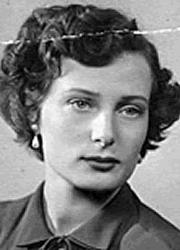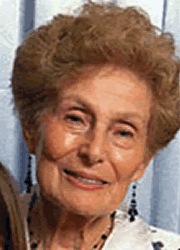Estelle Laughlin
http://www.ushmm.org/remembrance/survivoraffairs/meet/detail.php?content=laughlin
Estelle Laughlin Estelle Laughlin
Born July 9, 1929, Warsaw, Poland
Estelle Laughlin was born in Warsaw, Poland on July 9, 1929. She was the younger of two sisters. In addition to her parents, the family included many aunts, uncles, and cousins.
1933-39: Her family lived in a mostly Jewish neighborhood where Estelle attended the local public school. When she was ten years old, the Nazis invaded Poland and her formal education was stopped. Prior to the establishment of the Warsaw Ghetto, their parents inspired Estelle and her sister with the spirit of resistance.
1940-44: The early years of Ghetto life were difficult for the family, but the sisters clandestinely went to school and participated in religious services. In 1943, the family went into hiding in a bunker and remained there until the April, when the Ghetto was liquidated. When they were taken to the Umschlagplatz, Estelle's father was "selected" away from his family because he was quite ill with tuberculosis. In one of her last conversations with her father, Estelle recalls his telling her to live and not take the cyanide capsule sewn into her clothing. The family was sent to Majdanek where her father was killed. Estelle, her mother and sister endured forced labor in two concentration camps, Skarzysko and Czestochowa. Her sister was very ill with typhus at the time they were liberated by the Russians.
1945: After the war, Estelle, her sister, her mother and some cousins had to flee pogroms in Poland. Because her mother was born in Russia, they were able to go to the Russian section of Germany. They came to the U.S. in 1948, settling in New York City where Estelle worked in the garment industry and met her husband. They later moved to Cleveland where their 3 children were born. In 1961, they moved to the Maryland suburbs where Estelle was a sixth grade teacher and reading specialist. She began volunteering at the United States Holocaust Memorial Museum in 2007.

